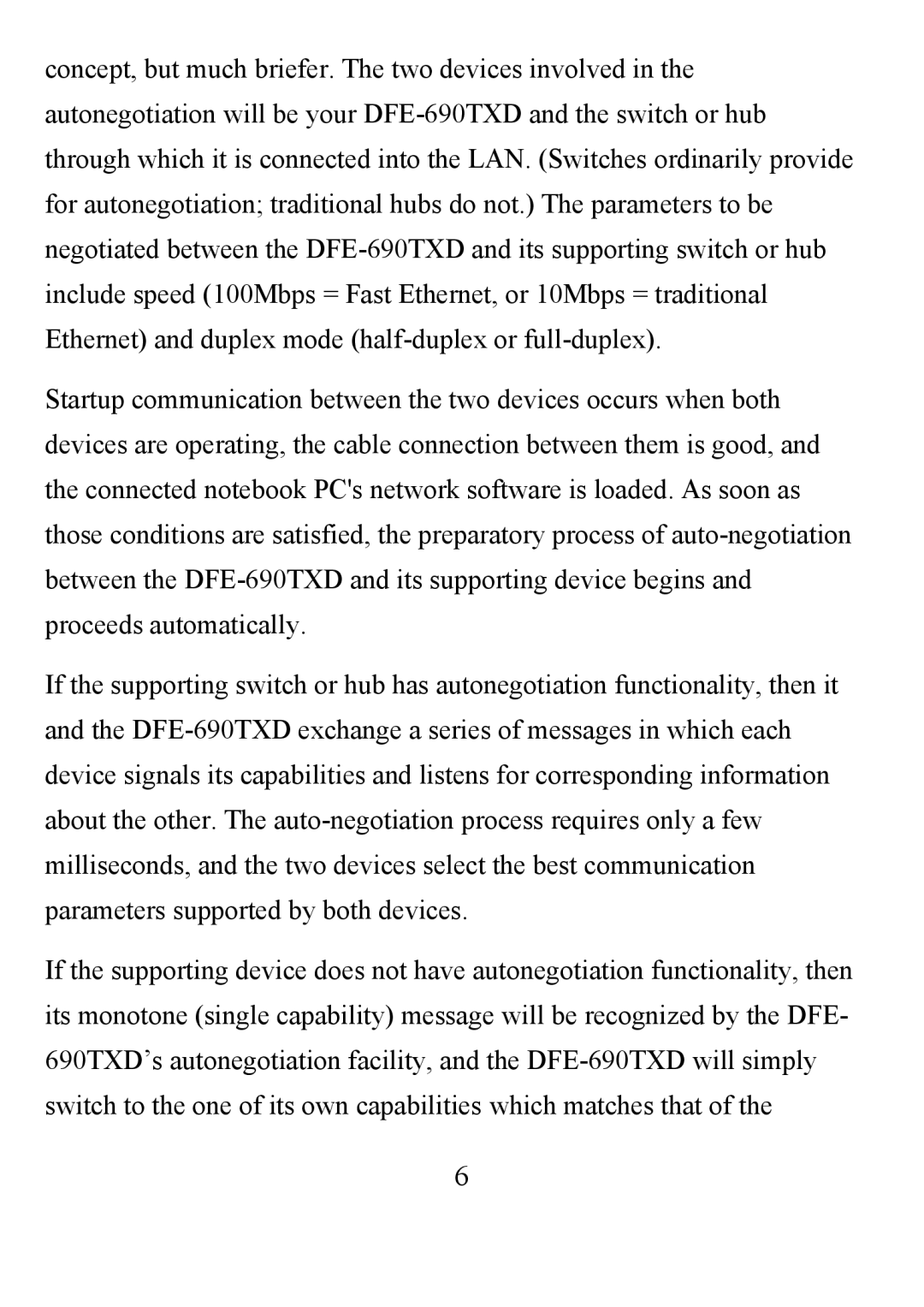concept, but much briefer. The two devices involved in the autonegotiation will be your DFE-690TXD and the switch or hub through which it is connected into the LAN. (Switches ordinarily provide for autonegotiation; traditional hubs do not.) The parameters to be negotiated between the DFE-690TXD and its supporting switch or hub include speed (100Mbps = Fast Ethernet, or 10Mbps = traditional Ethernet) and duplex mode (half-duplex or full-duplex).
Startup communication between the two devices occurs when both devices are operating, the cable connection between them is good, and the connected notebook PC's network software is loaded. As soon as those conditions are satisfied, the preparatory process of auto-negotiation between the DFE-690TXD and its supporting device begins and proceeds automatically.
If the supporting switch or hub has autonegotiation functionality, then it and the DFE-690TXD exchange a series of messages in which each device signals its capabilities and listens for corresponding information about the other. The auto-negotiation process requires only a few milliseconds, and the two devices select the best communication parameters supported by both devices.
If the supporting device does not have autonegotiation functionality, then its monotone (single capability) message will be recognized by the DFE- 690TXD’s autonegotiation facility, and the DFE-690TXD will simply switch to the one of its own capabilities which matches that of the
6
